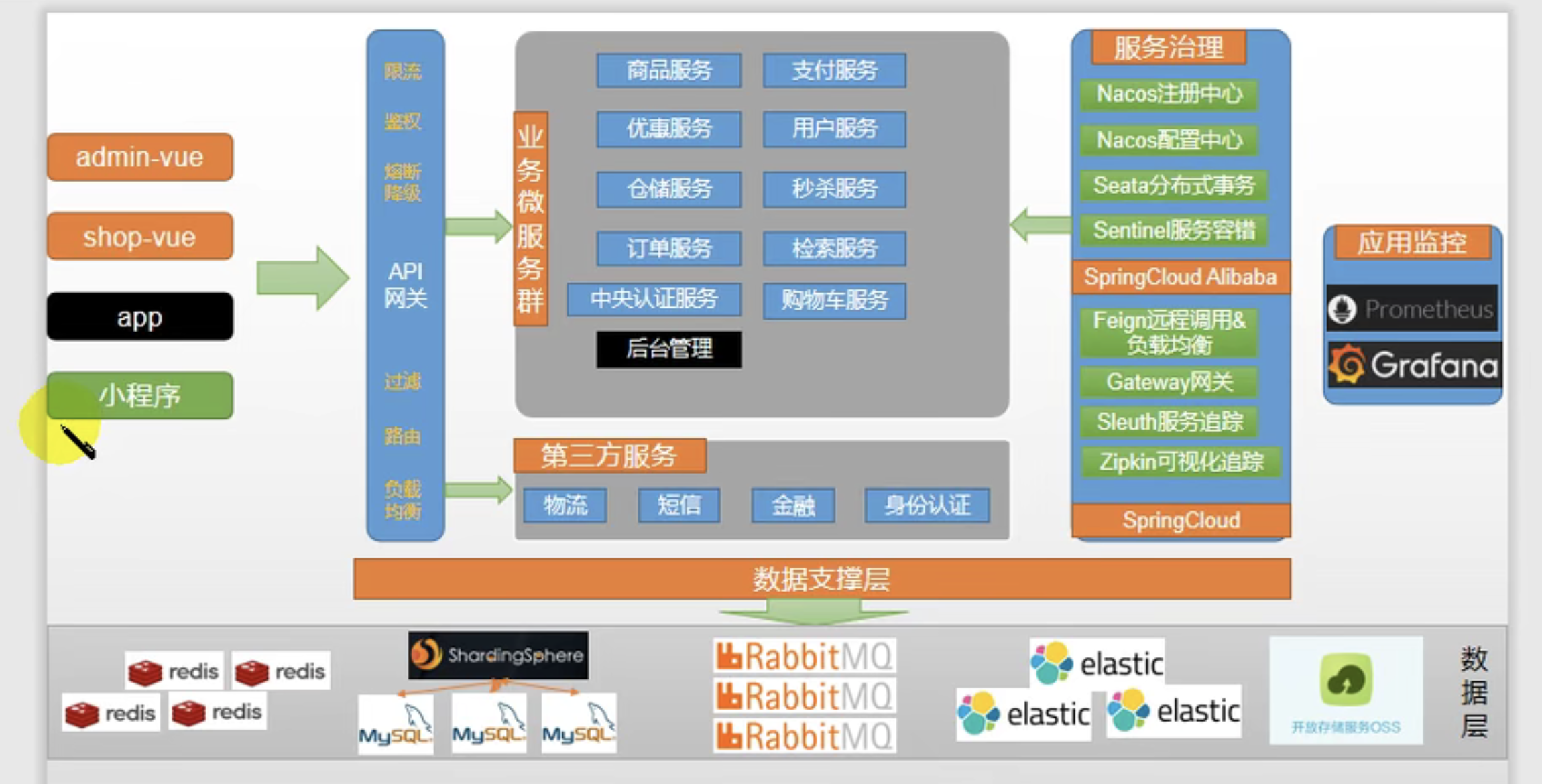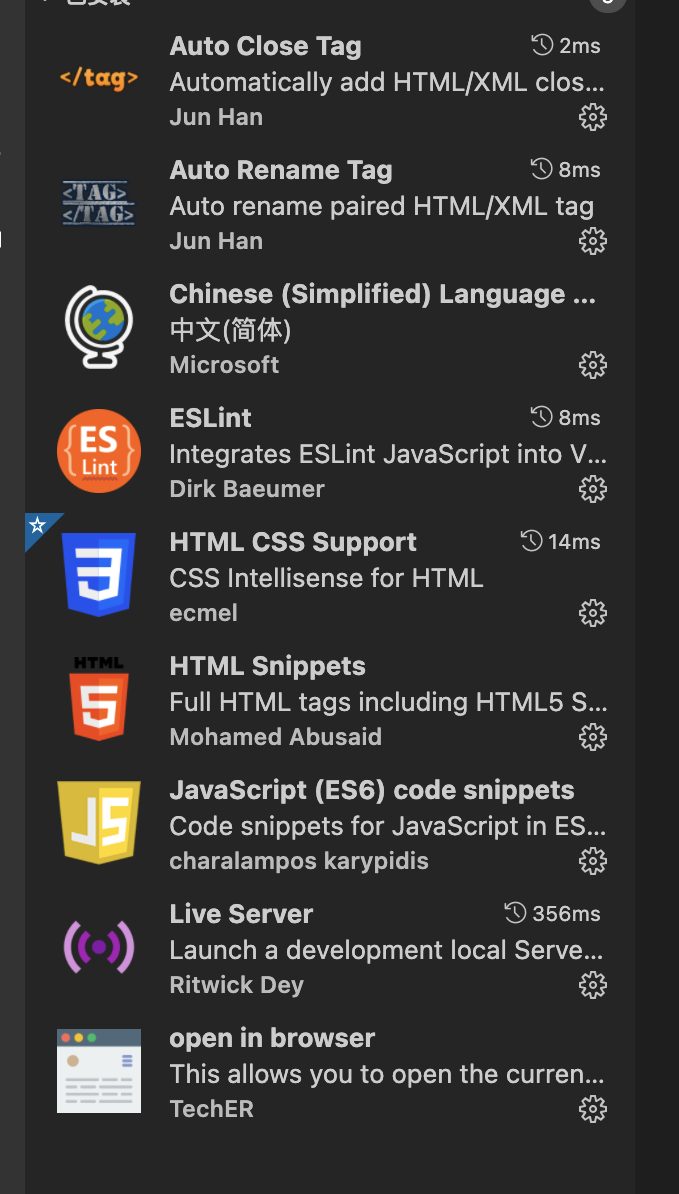Mall infrastructure diagram:

Preparation of necessary components
docker installation, sql,redis
Each image of docker can be regarded as loading an application on a complete and independent Linux system.
instructions
For more detailed instruction learning, refer to: docker Instruction Learning
docker images: view the installed images
1. Install mysql image:
go docker warehouse Search mysql versions in the image
sudo docker pull mysql:5.7 # --Name specify container name - v directory mount - p specify port mapping - e set mysql parameters - d run in the background sudo docker run -p 3306:3306 --name mysql \ -v /mydata/mysql/log:/var/log/mysql \ # Mount / mydata/mysql/log under Linux with / var/log/mysql shower gel inside the container -v /mydata/mysql/data:/var/lib/mysql \ -v /mydata/mysql/conf:/etc/mysql \ -e MYSQL_ROOT_PASSWORD=root \ # -e modify mysql parameters -d mysql:5.7
docker ps view running images in docker
docker ps CONTAINER ID IMAGE COMMAND CREATED STATUS PORTS NAMES c496d2553202 mysql:5.7 "docker-entrypoint.s..." 4 minutes ago Up 4 minutes 0.0.0.0:3306->3306/tcp, 33060/tcp mysql
From left to right:
- CONTAINER ID: ID
- IMAGE: IMAGE
- COMMAND: start COMMAND
- CREATED: start time
- STATUS: STATUS
- PORTS: port number and mapping relationship with host
- NAMES: container name
At this point, we can verify that an image is a complete Linux operating system:
# Execute / bin/bash of mysql container [root@VM-16-11-centos /]# docker exec -it mysql /bin/bash # You can see that you have entered the mysql image (see the ID) root@c496d2553202:/# ls # As can be seen from the directory, it is a complete Linux system directory bin boot dev docker-entrypoint-initdb.d entrypoint.sh etc home lib lib64 media mnt opt proc root run sbin srv sys tmp usr var
- Modify mysql configuration:
vi /mydata/mysql/conf/my.conf [client] default-character-set=utf8 [mysql] default-character-set=utf8 [mysqld] init_connect='SET collation_connection = utf8_unicode_ci' init_connect='SET NAMES utf8' character-set-server=utf8 collation-server=utf8_unicode_ci skip-character-set-client-handshake skip-name-resolve
docker restart mysql: restart the mysql image
2. Install redis
-
Pull image: docker pull redis (the latest image is the default when the version number is not added)
-
Directory mount
Because the redis.conf file does not exist at present, docker will think that the mounted redis.conf is a directory if it is mounted directly, so we create a file first and then mount it.
# In virtual machine mkdir -p /mydata/redis/conf touch /mydata/redis/conf/redis.conf docker run -p 6379:6379 --name redis \ -v /mydata/redis/data:/data \ -v /mydata/redis/conf/redis.conf:/etc/redis/redis.conf \ -d redis redis-server /etc/redis/redis.conf # Go directly to the redis client. docker exec -it redis redis-cli
- Modify redis configuration: configure AOF persistence mode
vi /mydata/redis/conf/redis.conf appendonly true
Make the image self start with the computer restart:
sudo docker update mysql --restart=always sudo docker update redis --restart=always
VsCode and corresponding plug-ins

Create all microservice directories
- Goods and services: product
- Warehousing service: ware
- Order service: order
- Coupon service: coupon
- User service: member
Common ground: both use SpringWeb+OpenFeign
Create database:
- pms: Commodity System
- sms: marketing system
- oms: order system
- ums: user system
- wms: inventory system
Then import the data
Secondary development by using the existing background management framework
Background management framework of Renren open source (secondary development)
1,renren-fast , background project of background management framework
2,Ren fast Vue (front end) , front end project
Import the Ren fast project into an existing project.
- Download node.js
Download from the official website. After the installation is completed, because it is in the / usr/bin / directory, there is no need to configure environment variables. It can be used out of the box.
Set mirror source:
npm config set registry https://registry.npm.taobao.org
In the Ren fast Vue front-end project, use npm install to install the required components.
code generation
Use the Ren generator project to generate the controller/dao/entity/service code of the basic service.
Only need to modify:
- The spring.datasource.url connection in application.yml is your own database, and the username and password are your own
- Mainpath (path), package (package name), moduleName (module name), tablePrefix (table prefix) in generator.properties
- Because each generated file depends on a common util and entity, we abstract a common package to solve the problem of common dependency.
Configure each service - create a new application.yml under resources, as follows:
spring:
datasource:
username: root
password: root
url: jdbc:mysql://49.233.35.25:3306/topmall_pms # Change to the corresponding database
mybatis-plus:
mapper-locations: classpath:/mapper/**/*.xml # mapper directory
global-config:
db-config:
id-type: auto # Auto increment primary key
server:
port: 10000 # Port number
Selection of other components
- Registry (service discovery / registration): SpringCloud Alibaba - Nacos
- Configuration center (dynamic configuration management): SpringCloud Alibaba - Nacos
- Load balancing: spring cloud - Ribbon
- Declarative HTTP client (calling remote service RPC?): SpringCloud - Feign
- Service fault tolerance (current limiting, degradation, fusing): SpringCloud Alibaba - Sentinel
- API gateway (weblux programming mode): spring cloud - gateway
- Call chain monitoring: SpringCloud - sleuth
- Distributed transaction solution: SpringCloud Alibaba - Seata